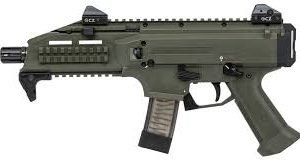No products in the cart.
1928 Izhevsk 9130 Mosin Nagant 7.62x54r
$380.00 Original price was: $380.00.$350.00Current price is: $350.00.
1928 Izhevsk 9130 Mosin Nagant 7.62x54r

The 3-line rifle M1891 is popularly known in the West as the Mosin Nagant and in Russia as the Mosin nagant rifle. The mosin nagant for sale is a five-shot, bolt-action, internal magazine–fed, military rifle. Also, It is one of the most mass-produced military bolt-action rifles in history. Hence it has over 37 million units having been made since its inception in 1891. It is primarily found chambered for its original 7.62×54mmR
1928 Izhevsk 9130 Mosin Nagant 7.62x54r
The Mosin nagant 3-line rifle, Model 1891 was adopted by the Russian military in 1891. There have been several variations from the original rifle, the most common being the M1891/30 (commonly referred to as “the 91/30” by shooters). Also, Some details were borrowed from the mosin Nagant for sale design.
1928 Izhevsk 9130 Mosin Nagant 7.62x54r
Furthermore, the 1891 Mosin nagant rifle for sale uses two front-locking lugs to lock up the action. However, the Mosin’s lugs lock in the horizontal position, whereas the Mauser locks vertically. The Mosin nagant bolt body is also multi-piece whereas the Mauser is one piece. Like the Mauser, the Mosin nagant uses a blade ejector mounted in the receiver. The Mosin nagant bolt is removed by simply pulling it fully to the rear of the receiver and squeezing the trigger. Meanwhile the Mauser has a bolt stop lever separate from the trigger
Like the Mauser, the bolt lift arc on the Mosin–Nagant is 90 degrees, versus 60 degrees on the Lee–Enfield. Furthermore, the Mauser bolt handle is at the rear of the bolt body. It locks behind the solid rear receiver ring. Hence the Mosin nagant bolt handle is similar to the Mannlicher:
1928 Izhevsk 9130 Mosin Nagant 7.62x54r
The rifling of the Mosin nagant for sale barrel is right turningg (clockwise looking down the rifle) 4-groove with a twist of 1:9.5″ or 1:10″. Also the 5-round fixed metallic magazine can either be loaded by inserting the cartridges singly, or more often in military service, by the use of 5-round stripper clips
1928 Izhevsk 9130 Mosin Nagant 7.62x54r
M39 Mosin Nagant 7.62x54R cal. Finnish M39 Mosin Nagant 7.62x54R cal. This one demonstrates the Fins’ carpentry talents and how they would piece together and refinish weaponry in order to get them back into the combat. The condition is excellent, with a few little dings and scratches here and there but nothing major. The barrel’s inside is spotless, with good, sharp rifling. 1928 Izhevsk 9130 Mosin Nagant 7.62x54r
1928 Izhevsk 9130 Mosin Nagant 7.62x54r
The Beretta 92G Elite LTT Compact is the ‘Ultimate 92 CarryPackage,’ featuring a special Vertec/M9A3 style slide with forward cocking serrations, fiber optic front sight, blacked out rear sight, G style decocker, beveled sharp edges, a spurless hammer, and a compact M9A1 style frame that Beretta shooters have always loved.
Beretta’s 92X semiautomatic handgun brings together all of the most desirable qualities that today’s shooters look for in a do-it-all weapon.
The 92X Comapct w/Rail takes the classic M9 Family’s proven reliability to the next level. New universal ergonomic features, such as a standard straight backstrap profile frame with new flat and wraparound highly textured grips, are included out of the box to meet the needs of the majority of shooters.
1928 Izhevsk 9130 Mosin Nagant 7.62x54r

These improvements, combined with Combat Sights, improved fire control, and a lengthened magazine release, result in an uncompromising handgun designed for competitive dynamic shooting and/or defensive use. The new 92X is the next step in the 90 series’ progression.
From the Vertec style thin grips to the traditional style wraparounds, the 92X was designed to deliver the performance that a shooter demands. From a beveled magazine well that enhances and speeds mag changes to the oversized magazine-release, from a 3-slot built-in light rail to a dovetailed front sight enabling easy configuration at the
end user level to a preferred sight picture and style, the 92X was designed to deliver the performance that a shooter demands. In brief, this multi-purpose pistol was created to be ideal for a variety of applications, including home and personal defense, competition, and carry in any situation.
1928 Izhevsk 9130 Mosin Nagant 7.62x54r
The 92X’s vertical grip, which is designed in the Vertec manner, has two significant advantages. In comparison to a standard 90 series pistol, its vertical configuration helps shooters with smaller hands to find a more natural hold with the handgun, and when combined with our innovative stiff wraparound polymer grips, it also allows for optimal fitment for large hands.
Category: Mosin Nagant For Sale Tags: 1-12Rd, 1-15 Ambi Slide Stop Lever, 1-15Rd, 2-10Rd Magazines, 3-Dot Iron Sights, 3.1" Barrel, 3.42” Barrel, 3.7" Barrel, 30-06 Bolt Action Rifle, 4.32” Thread, 4.6x30 HK Heckler & Koch, 63 22cal rifle, 7.62x39mm Rifle, 8Rd & 6Rd FN America, 8Rd & 6Rd Mag, 9MM, Adjustable Rear Sight/Fixed Front Sight, AK 47 RIFLE, AK 47 RIFLE WASR 10, AK47 AK Rifle, AK47 RIFLE-RI1805N, Ambi Magazine Release, Australia, automatic pistol, ballistic fingerprinting, billy club, Black Carbine Rifle, Black Finish, black magic, Blued Finish, bowie knife, brass knuckles, breech-loaded, bullet hole, bulletproof vest, butcher knife, buy Mosin Nagant rifles, Chinese Mosin Nagant M53, Chinese SKS Semi-Auto Rifle, colt pistol, colt revolver, COMPACT, country, CRB G2 45ACP 45 ACP BLACK RIFLE KV45-CBL20 NIB, Dragoon Rifle, engine, FDE, fire extinguisher, FN 503, FN 509, FN America, FN Optics Mounting System Ruger Security-9 Centerfire Pistol, FN PS90 57x28MM Black Rifle, FN SCAR 17-S .308 / 7.62 Semi-Auto Battle Rifle, FN Soft Case, FN509 Compact Tactical, Front Serrations, garand rifle, Glass Filled Nylon Frame, gunhild of wenden, HK 94, HK MP7 PDW, HK PTR 9CT, HK94, hunter-gatherer, INCREDIBLE LEVER ACTION RIFLE, Interchangeable Backstraps, kinetic penetrator, Kriss Vector Gen II CRB 45ACP Rifle, Loaded Chamber Indicator, lug wrench, M-11 9mm Semi-Auto Rifle, machine guns, million, mini ball, mortar, Mosin Nagant Rifle, Mosin Negant M39 rifles chambered in 7.62x54r, Mosin-Nagant M91/30 Rifles Bayonets, Mosin-Nagant Rifles, MRD, muzzle blast, muzzle flash, muzzleloader, national rifle association, Non-Manual Safety, Norinco SKS 20" 7.62x39 Rifle, norse language, nuclear weapons, old french, olympic games, paintball gun, pepper spray, permit, pistol grip, polymer frame, PTR 9KT 603 Pistol 5.8" HK MP5 Clone, PTR 9KT 603 Pistol 5.8″ HK MP5 Clone, PTR 9KT 603 Pistol HK, PTR 9KT 603 Pistol HK MP5 Clone, Rail, Remington Model 552 Speedmaster Rifle, rifle 3006 Sporter stock Super Cond, Rifle 7.62x54r, rocket launcher, Ruger Security-9 Centerfire Pistol, self defense, Semi-automatic, semiautomatic firearm, semiautomatic pistol, shell, shockwave, sten gun, Striker Fired, stun baton, sweyn forkbeard, switchblade knife, T53 7.62x54R w/Folding Bayonet, telescopic sight, thompson submachine gun, tommy gun, xrep, Z5RS MP5 9mm HK94 Spec!, ZENITH Z-5RS HKSP5
1928 Izhevsk 9130 Mosin Nagant 7.62x54r

The 3-line rifle M1891 is popularly known in the West as the Mosin Nagant and in Russia as the Mosin nagant rifle. The mosin nagant for sale is a five-shot, bolt-action, internal magazine–fed, military rifle. Also, It is one of the most mass-produced military bolt-action rifles in history. Hence it has over 37 million units having been made since its inception in 1891. It is primarily found chambered for its original 7.62×54mmR
1928 Izhevsk 9130 Mosin Nagant 7.62x54r
The Mosin nagant 3-line rifle, Model 1891 was adopted by the Russian military in 1891. There have been several variations from the original rifle, the most common being the M1891/30 (commonly referred to as “the 91/30” by shooters). Also, Some details were borrowed from the mosin Nagant for sale design.
1928 Izhevsk 9130 Mosin Nagant 7.62x54r
Furthermore, the 1891 Mosin nagant rifle for sale uses two front-locking lugs to lock up the action. However, the Mosin’s lugs lock in the horizontal position, whereas the Mauser locks vertically. The Mosin nagant bolt body is also multi-piece whereas the Mauser is one piece. Like the Mauser, the Mosin nagant uses a blade ejector mounted in the receiver. The Mosin nagant bolt is removed by simply pulling it fully to the rear of the receiver and squeezing the trigger. Meanwhile the Mauser has a bolt stop lever separate from the trigger
Like the Mauser, the bolt lift arc on the Mosin–Nagant is 90 degrees, versus 60 degrees on the Lee–Enfield. Furthermore, the Mauser bolt handle is at the rear of the bolt body. It locks behind the solid rear receiver ring. Hence the Mosin nagant bolt handle is similar to the Mannlicher:
1928 Izhevsk 9130 Mosin Nagant 7.62x54r
The rifling of the Mosin nagant for sale barrel is right turningg (clockwise looking down the rifle) 4-groove with a twist of 1:9.5″ or 1:10″. Also the 5-round fixed metallic magazine can either be loaded by inserting the cartridges singly, or more often in military service, by the use of 5-round stripper clips
1928 Izhevsk 9130 Mosin Nagant 7.62x54r
M39 Mosin Nagant 7.62x54R cal. Finnish M39 Mosin Nagant 7.62x54R cal. This one demonstrates the Fins’ carpentry talents and how they would piece together and refinish weaponry in order to get them back into the combat. The condition is excellent, with a few little dings and scratches here and there but nothing major. The barrel’s inside is spotless, with good, sharp rifling. 1928 Izhevsk 9130 Mosin Nagant 7.62x54r
1928 Izhevsk 9130 Mosin Nagant 7.62x54r
The Beretta 92G Elite LTT Compact is the ‘Ultimate 92 CarryPackage,’ featuring a special Vertec/M9A3 style slide with forward cocking serrations, fiber optic front sight, blacked out rear sight, G style decocker, beveled sharp edges, a spurless hammer, and a compact M9A1 style frame that Beretta shooters have always loved.
Beretta’s 92X semiautomatic handgun brings together all of the most desirable qualities that today’s shooters look for in a do-it-all weapon.
The 92X Comapct w/Rail takes the classic M9 Family’s proven reliability to the next level. New universal ergonomic features, such as a standard straight backstrap profile frame with new flat and wraparound highly textured grips, are included out of the box to meet the needs of the majority of shooters.
1928 Izhevsk 9130 Mosin Nagant 7.62x54r

These improvements, combined with Combat Sights, improved fire control, and a lengthened magazine release, result in an uncompromising handgun designed for competitive dynamic shooting and/or defensive use. The new 92X is the next step in the 90 series’ progression.
From the Vertec style thin grips to the traditional style wraparounds, the 92X was designed to deliver the performance that a shooter demands. From a beveled magazine well that enhances and speeds mag changes to the oversized magazine-release, from a 3-slot built-in light rail to a dovetailed front sight enabling easy configuration at the
end user level to a preferred sight picture and style, the 92X was designed to deliver the performance that a shooter demands. In brief, this multi-purpose pistol was created to be ideal for a variety of applications, including home and personal defense, competition, and carry in any situation.
1928 Izhevsk 9130 Mosin Nagant 7.62x54r
The 92X’s vertical grip, which is designed in the Vertec manner, has two significant advantages. In comparison to a standard 90 series pistol, its vertical configuration helps shooters with smaller hands to find a more natural hold with the handgun, and when combined with our innovative stiff wraparound polymer grips, it also allows for optimal fitment for large hands.
This frame, when paired with current Vertec Grips and the newly developed 92X specialized panels, provides the most end-user frame configuration options of any 90 series frame. With all of these new options accessible across the 92X Family line, as well as improved metal frame checkering, the 92X family’s user interface is the most advanced on the market.
1928 Izhevsk 9130 Mosin Nagant 7.62x54r
The 92X’s universal slide, which is simply convertible from FS to G mode and incorporates a Vertec configuration dovetail on all sizes, is one of the most notable characteristics outside of the Vertec style frame. This implies that the 92X’s safety lever can be set to operate in either a safety-decocker mode (FS) or a decocker-only mode (G) for those who prefer this arrangement.
A changeable front sight adds even more adaptability for shooters who have specific preferences in terms of sight picture, material, or construction. In addition, the built-in 3-slot Picatinny rail in front of the trigge allows for a range of accessorization choices.
The 92X was created to be utilized in a variety of settings, from competition to self-defense to combat. As a result, Beretta has added a substantial bevel to the magazine well, allowing for rapid magazine changes with just one hand, regardless of lighting circumstances. Similarly, the magazine-release button is bigger, making it easy to use even when wearing gloves when seconds count.
1928 Izhevsk 9130 Mosin Nagant 7.62x54r
And, with to known 90 series design components including a Gen 3 locking block on the barrel, proven and highly functioning magazine design, and easy tool-free disassembly, the 92X is low-maintenance. It doesn’t matter if you’re at the action pistol range, at home, or for concealment.
Around 1928, the Izhevsk Arsenal produced a rifle chambered in 7.62x54Rmm. T.G. of Knoxville, Tennessee imported it, and there are import marks on the barrel and receiver. It had a matte blued finish, a 28.7″ barrel with “pre-1928” style markings, a hooded post front sight, a tangent rear sight graduated to 2,000 meters,
a cleaning rod, a smooth trigger, a fixed 5 round fixed magazine with hinged floorplate, a bolt finished in-the-white with straight handle, a hex receiver, two barrel bands, a tan canvas sling, smooth wood handguard, and The barrel, bolt, floorplate, and buttplate all have matching serial numbers. Rifle is still in use.
1928 Izhevsk 9130 Mosin Nagant 7.62x54r
A Dragoon is an M91 variant that is the same length as an M91/30 but with M91-style sights and a different handguard. In the early 1930s, this model was phased out and replaced by the M91/30. The sights and handguard of an upgraded Dragoon have been replaced with M91/30 kinds. In that configuration, it’s essentially an M91/30, but because it’s pre-1930,
it’s often described to as an ex-Dragoon or updated Dragoon by US collectors. While not as uncommon as a Dragoon in its original configuration, they are less frequent than post-1930 M91/30s and are highly sought after by collectors.
1928 Izhevsk 9130 Mosin Nagant 7.62x54r
Sergei Mosin of Russia and Leon Nagant of Belgium collaborated on the design of a repeating bolt action infantry rifle in 7.62X54r, which was accepted by Russia in 1891. As a result, Mosin Nagant is given. The official name is the Three Line Rifle, Model of 1891 (bore diameter, a ‘line’ equaling one tenth of an inch). Tula (from 1891 to 1926), Izhevsk (from 1891 to 1926), and Sestroryetsk (from 1892 to 1918) were the three Russian arsenals that were contracted for manufacture. From 1892 until 1895, France boosted production from its Chatellerault Arsenal.
For more than half a century, the Mosin Nagant and its many variations were Russia’s and the Soviet Union’s principal fighting rifles. The M91 was also adopted by several other countries, and it is still in limited usage for military purposes around the world today.
Dragoons are supposed to use it (mounted infantry). The M1891 is shorter and lighter. The dimensions of the Dragoon rifle are identical to those of the later M1891/30 rifle, and most Dragoon rifles were modified into M1891/30s. The majority of these rifles, dubbed “ex-Dragoons” by collectors, can be identified by their pre-1930 date stampings, however a limited number of Dragoon rifles were built from 1930 to 1932 and were impossible to date after reworking.
1928 Izhevsk 9130 Mosin Nagant 7.62x54r
These rifles were designed for Cossack riders and came without a bayonet. It’s almost identical to the dragoon type, however it used to have a flat rear sight leaf like the M1891/30. With the adoption of the M1908 spitzer bullet, this sight was replaced with a saw tooth ramp-and-leaf sight similar to the Dragoon’s. The Cossack rifle,
unlike the Infantry and Dragoon variants, was designed to be used without a bayonet because they were not given with one. Sabers were used by the Cossacks in the past. The stock of the Cossack rifle was originally constructed without reinforcing bolts, although rifles made in and after 1909 did have them. It is likewise
1928 Izhevsk 9130 Mosin Nagant 7.62x54r
The Mosin Nagant M91 (and Dragoon/Cossack derivatives) used a berdan primed, smokeless powder cartridge and a hefty round nose bullet from 1891 to 1908. The early flat leaf rear sight was mounted on a notched base with the numbers 4, 6, 8, 10, and 12 numbered sequentially on the left side (Chatellerault examples are numbered on the right side base).
The ballistic range of round nose bullets is measured in hundreds arshini (one arshin equals approximately one man’s stepping distance, or 28″). The back of the leaf could also be lifted to a vertical position, with graduations 13 through 27 stamped on the back side, allowing for sighting out to a range of 2,700 arshini.
Russia adopted the pointed and lighter Spitzer bullet in 1908. Because of the different ballistics, the rear sight leaf had to be altered to accommodate the faster muzzle velocity. The end solution was the Konolavov, a bent rear sight leaf named after the creator. The rear of the leaf was graduated from 13 to 32 for sighting out to 3,200 arshini, although the graduations on the side of the base remained the same.
The Dragoon and Cossack Konavalov sight leaves were labeled KAB and KA3, respectively.
The front sight, known as a barleycorn, had a wedged shape that slanted back to front and was attached to a dovetailed base on the barrel’s front.
1928 Izhevsk 9130 Mosin Nagant 7.62x54r
The Model 1891 was introduced in 1891. Mosin Nagant was subjected to numerous upgrades after its first release. Over time, barrel bands have developed to incorporate changes in the overall design of the weapon as well as pattern changes in the parts themselves. The ‘Captured Head’ on the tightening screw is a recurrent theme in all designs.
Despite the fact that all barrel band screws have right-hand threads, the capture head feature gives the impression of left-hand threading. Twisting the screw clockwise loosens the band’s gripping action, while turning it counterclockwise tightens it. As a result, many M91 barrel bands are destroyed due to a lack of understanding on how to use the capture head.
1928 Izhevsk 9130 Mosin.Nagant 7.62x54r
Because early M91 first pattern bands, or Type-1, were installed before handguards were released, no slots were cut within the top interior section to enable the handguard retention tabs. The front band also served as a swivel attachment for the sling. These bands aren’t very common nowadays.
The early M91 second pattern bands (front with swivel, exceedingly rare), or Type-2, had notches cut into the upper interior to allow the handguard retention tabs, and the front sling swivel was kept.
Early M91 third pattern bands (common), or Type-3, were nearly identical to the second design except for the front sling swivel, which was el

Reviews
There are no reviews yet.
Related products
Sale!
Mosin Nagant For Sale
Sale!
Kriss Vector
Sale!
Chiappa rhino
Sale!
Chiappa rhino
Sale!
CZ Scorpion
Sale!
SKS For Sale
Sale!
Mosin Nagant For Sale
Sale!
Mosin Nagant For Sale











Be the first to review “1928 Izhevsk 9130 Mosin Nagant 7.62x54r”